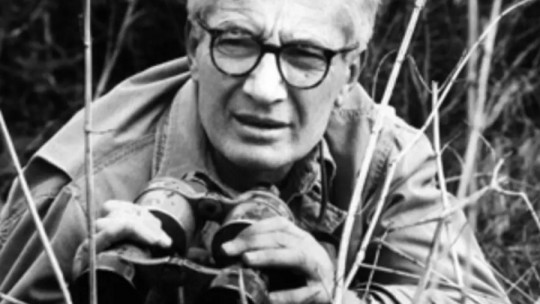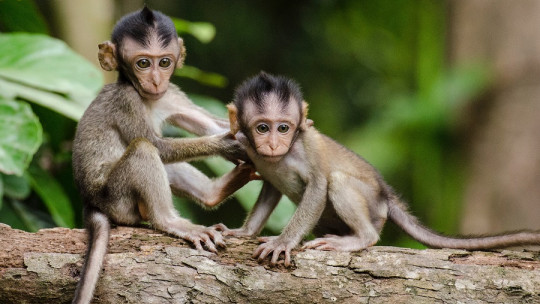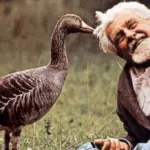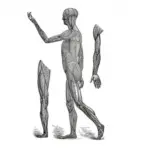
Human beings have always questioned the origin and causes of the things that happen to them. The application of this curiosity for knowledge to the field of biology has given rise to ethology, among other branches of science.
One of the fathers of this science is Nikolaas Tinbergen, a zoologist who made several contributions to the study of living beings. Among them, we find what is known as Tinbergen’s 4 questions an effort to organize the unknowns to be answered about the biology and behavior of any animal (including humans).
What function does a behavior have? How does it develop, evolve and what causes it? If you want to know these answers, keep reading.
Background: the beginnings of biology
Aristotle already stated that “to know something scientifically is to know its causes.” He also established 4 types of causes: material, formal, efficient and final. This can be considered a precedent to Tinbergen’s questions, since it was intended to be the starting point for the investigations of any researcher who wanted to study nature.
Before Tinbergen, around 1930, Julian Huxley talked about three big problems in biology: causation, survival value, and evolution. It was Niko Tinbergen who added the fourth: ontogeny, that is, the development of each individual from the moment he is born until he dies. On the other hand, Ernst Mayr in 1961 spoke of proximate cause and ultimate cause.
What are the 4 questions of Tinbergen?
Niko Tinbergen, considered one of the fathers of ethology, was a Dutch zoologist who was born in 1907. In 1973 he was awarded the Nobel Prize in Physiology and Medicine, along with Konrad Lorenz and Kar von Frisch. for his discoveries in relation to individual and social behavior patterns.
Tinbergen, in his article On aims and methods of ethology of 1963, proposes the existence of 4 main problems of biology, or Tinbergen’s 4 questions which are levels of biological explanation of certain natural phenomena.
Tinbergen poses these questions with the aim of understanding behavior, and they are the following.
Cause or mechanism: What is the cause of the behavior?
It represents the proximate or structural cause. Are the internal and external stimuli that trigger behavior.
Here, sensory receptors play a key role in allowing us to perceive the information provided by such stimuli.
Survival value: How does such behavior contribute to the survival and reproductive success of the animal?
It represents the ultimate cause. That is to say, the function, adaptation or adaptive advantage of the behavior.
Ontogeny: How does such behavior develop during the life of the animal?
It has to do with the possible changes and evolution that a behavioral pattern experiences throughout the life of individuals.
Evolution: How has behavior evolved?
Also called phylogeny. Study the phylogenetic history of such behavior, that is, of the precursors. Thanks to this it can be understood that the behavior is in this way today, and not in another.
The levels of biological explanation
Relating Tinbergen to Mayr, we see that proximate causes (immediate in time) would encompass mechanism and ontogeny, and evolutionary causes (more distant or distal) would encompass survival value and phylogeny.
Thus, the former would explain the structure and mechanisms of behavior, and the latter, why organisms are the way they are.
Practical example
To illustrate Tinbergen’s questions, let’s see an example. It is something indicative to give us an idea, but the answers will always vary from one case to another.
Let’s think about a child who hits others when he gets angry. Let’s analyze the components of such behavior according to Tinbergen’s 4 questions.
Cause
It may be due to irritability, low tolerance for frustration, not having other emotional containment skills, etc.
Function
Draw attention, vent anger, show your irritability so that you can be cared for.
Ontogeny
It develops and is repeated because it has previously shown similar behaviors and these have been reinforced at some point.
Evolution
The child has seen how his siblings were reinforced for such behavior, and he reproduces it.
Implications for science
As we have seen, we can break down and analyze the components of each animal behavior that we consider although obviously not all behaviors will have the same function, much less the same adaptive value.
There will be behaviors that are more adaptive than others, and these will be the ones that will probably be repeated in the evolutionary chain and those that will consolidate more stably in a species.
Currently, 50 years after the publication of that article, Tinbergen’s 4 questions are still considered one of the author’s most important and valuable legacies, due to the importance given to his comprehensive and multifaceted vision of behavior.
Author’s vision and conclusion
Tinbergen gave his theory a pragmatic, as well as logical, character, which makes his work a useful and complete tool for understanding behavior. He was one of the first to study the adaptive meaning of behaviors which may seem useless at first; For example, he studied the behavior of black-headed gulls when removing the shells of their eggs from the nest once their chicks were born.
The author considered that grouping problems would facilitate understanding of behavior, and considered it a fundamental part of ethology. In any case, he always opted not only to integrate behaviors, but also to study them individually, thus acquiring an analytical and global vision of the behavior or problem at the same time.
Tinbergen’s 4 questions are apparently simple, but at the same time synthetic, since they lead us to a complete understanding of a biological or behavioral phenomenon.








